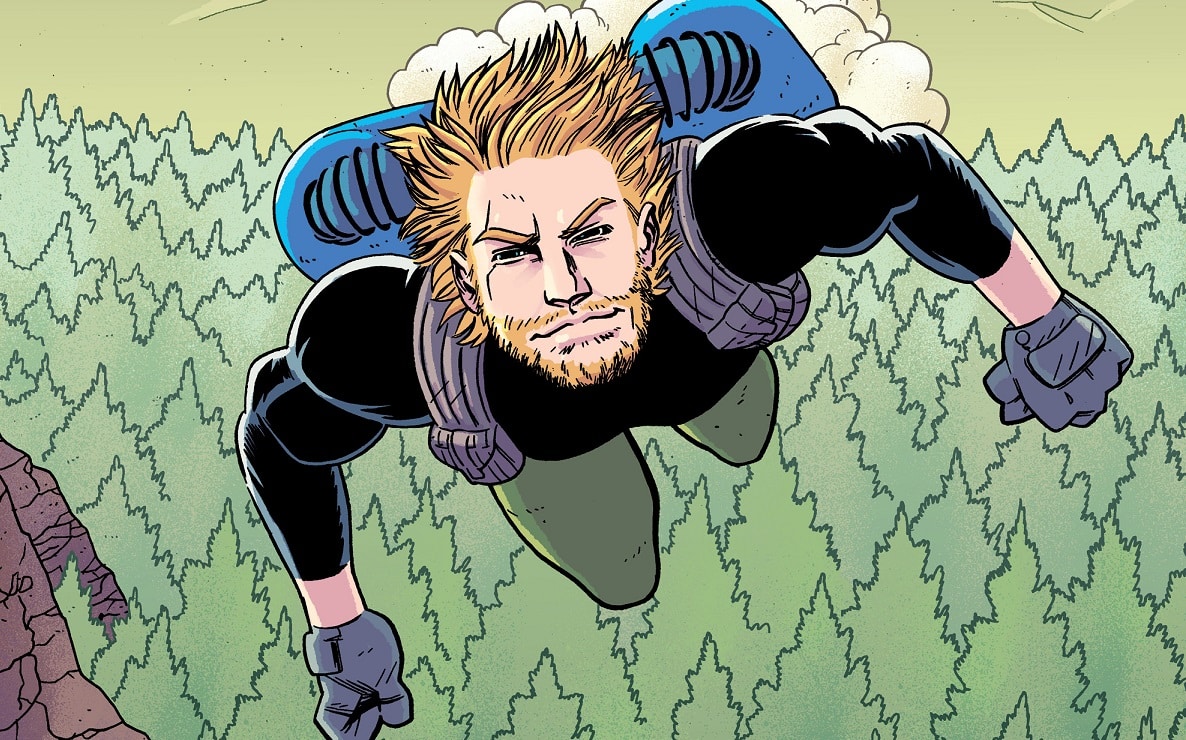Yesterday at San Diego Comic Con, Image Comics gathered a group of its biggest creators to talk about what inspires them to create the most cutting edge comics in the industry. On stage were Marjorie Liu (Monstress), Kieron Gillen (The Wicked + The Divine), Chynna Clugston Flores (Blue Monday), Joshua Williamson (Nailbiter), Jason Aaron (Southern Bastards), and Jason Latour (Southern Bastards). During the panel, they covered a wide swath of topics in the context of their works including pop music, racism, and “redneck couture.”
The panel opened with a discussion of Williamson and artist Mike Henderson’s series Nailbiter, which tells the story of a town where a high concentration of children grew up to become serial killers. Williamson said he wrote the series to explore why we find serial killers so interesting. He, like many, love TV shows like Dexter, movies like Silence of the Lambs, and serial killer documentaries. Williamson was on a flight to a previous San Diego Comic Con when he was thinking about the Zodiac killer and decided to mix that love with his desire to tell the story of a small town.
On a humorous note, Williamson mentioned that his love of serial killers led to the love of his life. He said that he pitched Nailbiter to Vertigo who rejected it, then came back to him to ask for another pitch, and then rejected Nailbiter again. Williamson happened to have a blind date the night he got rejected by Vertigo so he told his date about it and rather than recoiling, she told him she loved serial killers as well. They talked about murderers for the rest of the date. Williamson even asked what she would do if she were a serial killer and she told him she’d sew the mouths of cat-callers shut and kill paedophiles in a murder van. These concepts ultimately ended up appearing in Nailbiter after the two of them were married.
After Williamson, the panel turned to Liu, whose series Monstress, drawn by Sana Takeda, explores themes of war, body issues, and a girl’s coming of age. She said that she was inspired to tell the story of a girl who had a monster literally inside of her because of her grandparents, who were both Chinese survivors of World War II. Marjorie said that she would often spend weekends with her grandparents as a child. Occasionally during those trips, her grandmother would casually tell her stories about escaping from enemy combatants by the hide of her hair with a slight smile on her face. Her grandfather, who was a general in the war, would similarly casually tell stories about dropping bombs on people. The attitude her grandparents displayed, combined with the glut of post-apocalyptic media such as Mad Max coming out in the 1980s and 1990s, combined and mixed with the innate anxiety Liu felt about the terrible things people could do to one another.
Liu also mentioned that the plight of Monstress‘s lead character, Maika, is an allegory for the experiences she has observed her father go through as a minority. She noted that “the easiest way to control people is to dehumanize them” and that feeling like an other can make one feel like a monster.
Flores and Gillen discussed the influence pop music has on their works at length. Flores noted that pop music helped her get through her childhood and to this day acts as a creative catalyst for new ideas. She mused about how she was inspired to create after she watched the MTV station go live. Her stories were met with showers of praise from Gillen, who noted the amount of influence Flores has had on him and other creators such as Bryan Lee O’Malley, who according to Gillen has described Scott Pilgrim as a cross between Blue Monday and Dragon Ball Z. Gillen said that Blue Monday showed him and The Wicked + The Divine artist Jamie McKelvie that they could pour their “obsessions into [their] work,” which ultimately resulted in Phonogram and now The Wicked + The Divine.
Gillen went into detail about The Wicked + The Divine‘s massive curated playlist, which stretches over 300 songs. Gillen says he uses the soundtrack to set the tone for characters and scenes, but doesn’t always know exactly why songs fit certain characters until later on. He channels his characters through music in a way that he says is not “shamanistic,” but “obsessional.” He mused that once The Wicked + The Divine ends, he’d like to do editors notes for the entire playlist.
Jason Aaron and Jason Latour described their series Southern Bastards has one that swerves a lot. It defies reader expectations in many unexpected and unsettling ways. However, despite the constant seismic shifts in narrative style and tone, the series has always had a roadmap that gives the changes meaning. With the fourth volume of the series set to begin soon, the major plot threads will finally start to crash together. The creators were very frank and noted that they never expected the series to gain much traction. Latour originally decided to work with Aaron on the series as a “redneck couture” fashion statement.
The panel concluded with several questions from fans. One asked what drew the writers to comics to begin with. The answer ranged as Williamson said comics was a lifestyle choice rather than a hobby for him as a kid. Liu said she was attracted to comics’ ability to combine the “interiority of prose” with the “visuals of film.” Gillen and Latour both mentioned they liked the amount of control comics creation provides. Gillen also mentioned that he is a neophile who would have never written Ulysses as a prose writer but believes there’s “still room in comics to play for keeps.”
The moral of the panel came at the end when one fan asked for writing tips from the group. Liu said that when she first started writing, she’d pour all her obsessions into a book and it would turn out to be a hot mess. She likened these kinds of stories to trees overloaded with ornaments and went on to say that she was eventually able to make her stories work when she focused more on the tree itself, which represents her characters. As long as she kept her eye on their journey, all the ornaments would eventually hang into place on their own, creating a story that not only satisfies her itch to tell stories that matter, but the readers’ need to fall in love with three dimensional characters as well.









